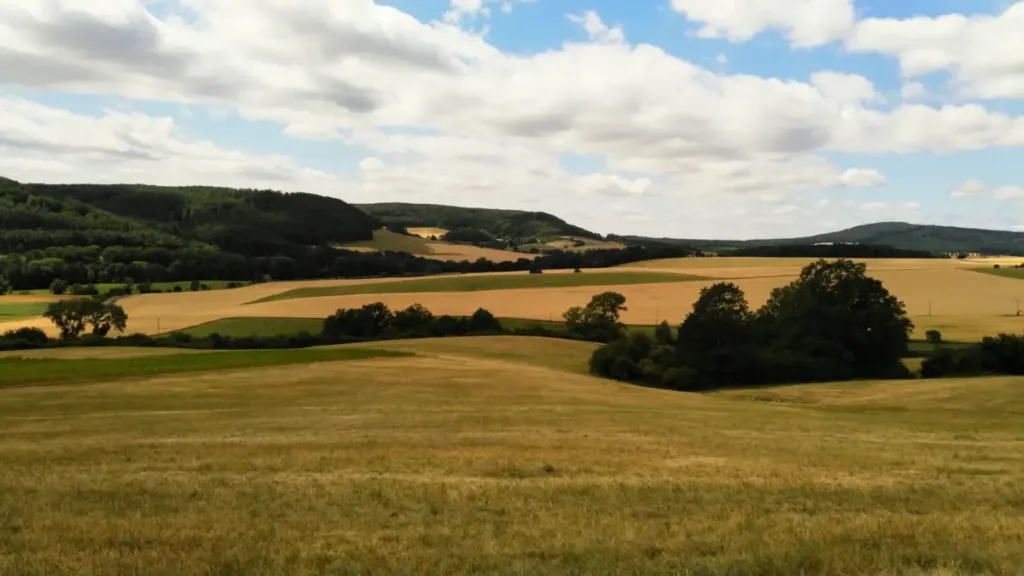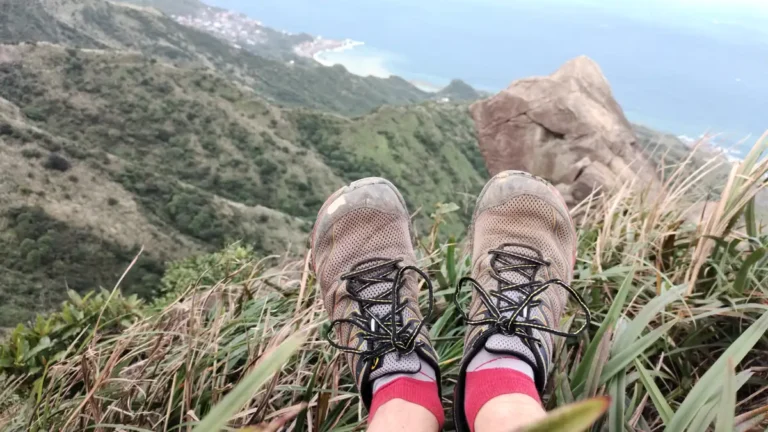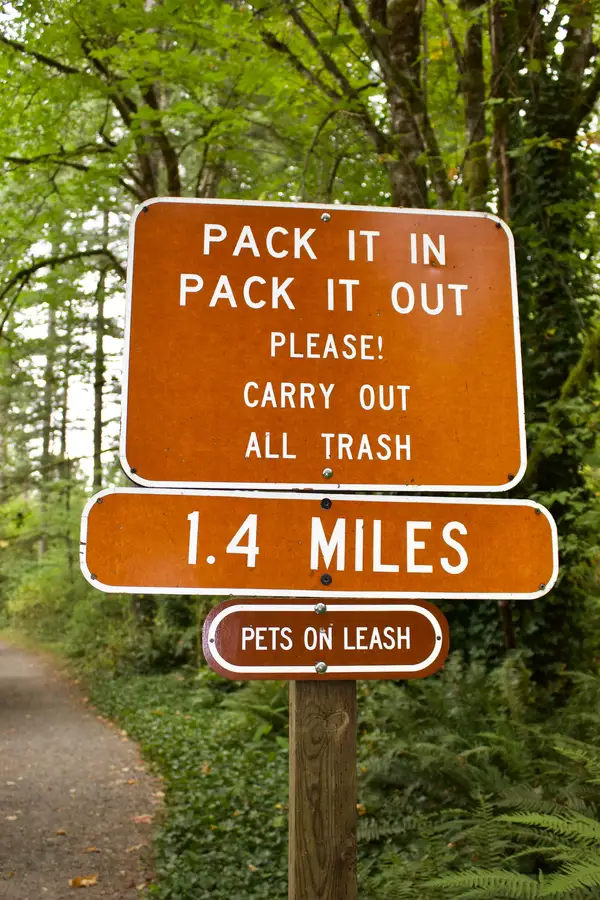Hiking 101: 13 tips Every Beginner needs to know
This post may contain affiliate links. This means that we may receive a small commission from purchases through those links. Read more in our affiliate disclosure.
Hiking—what a simple, joyous activity! To some, it’s just walking in the woods, but to those of us who cherish the call of the wild, it’s so much more. Hiking is about traversing natural landscapes, soaking in scenic vistas, and exploring the vast unknown. It’s exercise, adventure, and meditation all rolled into one.
The term “hiking” might have sprung from the 1800s English dialectal term “hyke,” meaning “to walk vigorously.” This gives a playful nod to our ancestors who were, perhaps without knowing, teaching us the first steps towards preserving our wellness and connection to nature.

General Hiking Tips
Embarking on a hiking journey can be transformative, but a good hike begins with preparation and understanding. Here’s how to make sure your hike is enjoyable and safe.
1. Pick the Right Trail
For those new to hiking, the choice of trail can make or break your experience. It’s wise to start with something less challenging—trails shorter than 5 miles with minimal elevation gain are perfect. This will help you gauge your comfort and stamina levels without overdoing it. Start by checking local parks or hiking websites for trails rated as “easy” or “beginner-friendly.” These trails often provide detailed descriptions and reviews that can help you understand what to expect and prepare accordingly.
2. Choose Appropriate Footwear
Comfort is key when it comes to footwear on the trail. While hiking boots are the go-to for their support and traction, don’t discount a sturdy pair of sandals, especially if you, like me, prefer letting your feet breathe. Just make sure they’re suited for the terrain and your ankles are up to the task! A good pair of hiking boots shoes will protect your feet from rough terrain and provide the necessary support for longer treks. If you’re venturing out on a simple day hike on well-maintained trails, a pair of trail running shoes or supportive sandals might be sufficient.

3. Dress Smart
Layering is your best friend in the great outdoors. Weather can change unexpectedly, so wearing layers allows you to adjust to whatever conditions the trail throws at you. Start with a moisture-wicking base layer that keeps sweat away from your skin, add an insulating layer for warmth, and top it off with a waterproof or windproof shell to protect against the elements. This strategy lets you easily adapt to rising or falling temperatures, wind, and precipitation.
4. Hydrate and Nourish
Never underestimate the amount of water you’ll need—always pack more than you think necessary. For a typical day hike, a good rule of thumb is about a half liter of water per hour of moderate activity in moderate temperatures.
For snacks, high-energy options like nuts, dried fruits, or granola bars can be a lifesaver, giving you that much-needed boost to reach the peak or make your way back. These foods are not only nutritious but also lightweight and easy to pack.
5. Share Your Plans
Safety first—always let someone know your itinerary and expected return time. Especially if you’re venturing into less frequented areas! Whether you leave a note at home or send a message to a friend, having someone aware of your plans can make all the difference in case of an unexpected emergency.
Safety
Safety can’t be overstated in the wilderness. Here’s how to stay secure and enjoy a worry-free adventure.
6. Be aware of the weather
Always check the weather forecast before you head out. Conditions can change swiftly, and being prepared is your best defense against the elements. Knowing what to expect weather-wise can help you choose the right gear and decide whether it’s safe to proceed or better to postpone. In some cases, sudden weather changes can pose real dangers, especially in mountainous areas where storms can strike quickly and with little warning.
7. Bring A light
A headlamp is an essential item to pack, even if you plan to return by dusk. Trails can be tricky to navigate in the dark, and a good light source is indispensable. It’s not just about seeing where you’re going—it’s also about making sure you’re seen. When navigating through rocky terrain or trying to find the trail in twilight, a headlamp or flashlight can prevent accidents and help you keep on track.

8. Hike in Company
Especially for beginners, hiking with friends or joining a group can enhance the experience and offer added security. There’s safety in numbers, and it’s always more fun to share the views and the challenges along the way. If you’re new to hiking or exploring unfamiliar trails, having companions can also provide moral support and help manage any difficulties that arise.
9. Respect the Wild
Be mindful of wildlife and maintain a safe distance. You’re merely a visitor in their home! Watching animals in their natural habitat can be a thrilling part of any hike, but it’s important to respect their space and not interfere with their normal activities.
10. Pack the Ten Essentials
No hiker should hit the trail without these basics:
- Navigation: Map and compass to help you stay oriented and on track.
- Sun Protection: Sunscreen, hat, and sunglasses to protect against UV rays.
- Insulation: Extra clothing in case the weather turns colder than expected.
- Illumination: Headlamp or flashlight for visibility.
- Hydration: Adequate water to stay hydrated throughout the trip.
- Nutrition: Enough food to maintain energy levels.
- First-Aid Kit: Essential for handling minor injuries or emergencies.
- Emergency Shelter: A tent, bivy sack, or space blanket in case you get stranded.
- Fire Starter: Matches, lighter, or a fire starter in case you need to warm up or signal for help.
- Repair Kit: Tools and duct tape can fix gear or mend broken equipment.
Leave No Trace
When hiking, your actions should leave no evidence of your presence, ensuring that the natural beauty is preserved for others to enjoy after you.
11. Be Respectful
Being considerate of other hikers ensures everyone can enjoy their trek. Keep noise levels down and be courteous on the trail. This includes greeting others with a smile or a nod and sharing the path, particularly on narrow routes. The wilderness is a place for everyone to find peace and tranquility, so respecting each other’s experience is key to maintaining a harmonious environment.
12. Pack Out Trash
Everything you bring in, you must take out. Leaving trash not only harms the environment but spoils the experience for others. Always carry a small trash bag with you and be prepared to pack out all your garbage, including food scraps, wrappers, and even biodegradable items like banana peels or apple cores, which can take a long time to decompose and may not be native to the ecosystem.

13. Trail Etiquette
Good trail manners are essential. Yield to hikers headed uphill (they need the momentum), and when passing, a friendly “on your left” lets others know you’re coming through without startling them. It’s also important to stay on the marked trails to avoid damaging plant life and causing erosion. In areas where trails are less defined, walk on durable surfaces such as rock or dry grasses where your impact will be minimized.
Conclusion
Hiking offers abundant rewards – physical and mental wellness, connection with nature, and an escape from daily life. By properly preparing with the right trails, footwear, clothing, supplies, and safety precautions, hikers of all levels can enjoy comfortable and secure outdoor adventures. Crucially, following Leave No Trace principles preserves natural environments for future generations. Each step on the trail provides opportunities to learn, explore, and grow. Embrace the joy, challenge, and tranquility that hiking offers our wild, beautiful planet.




